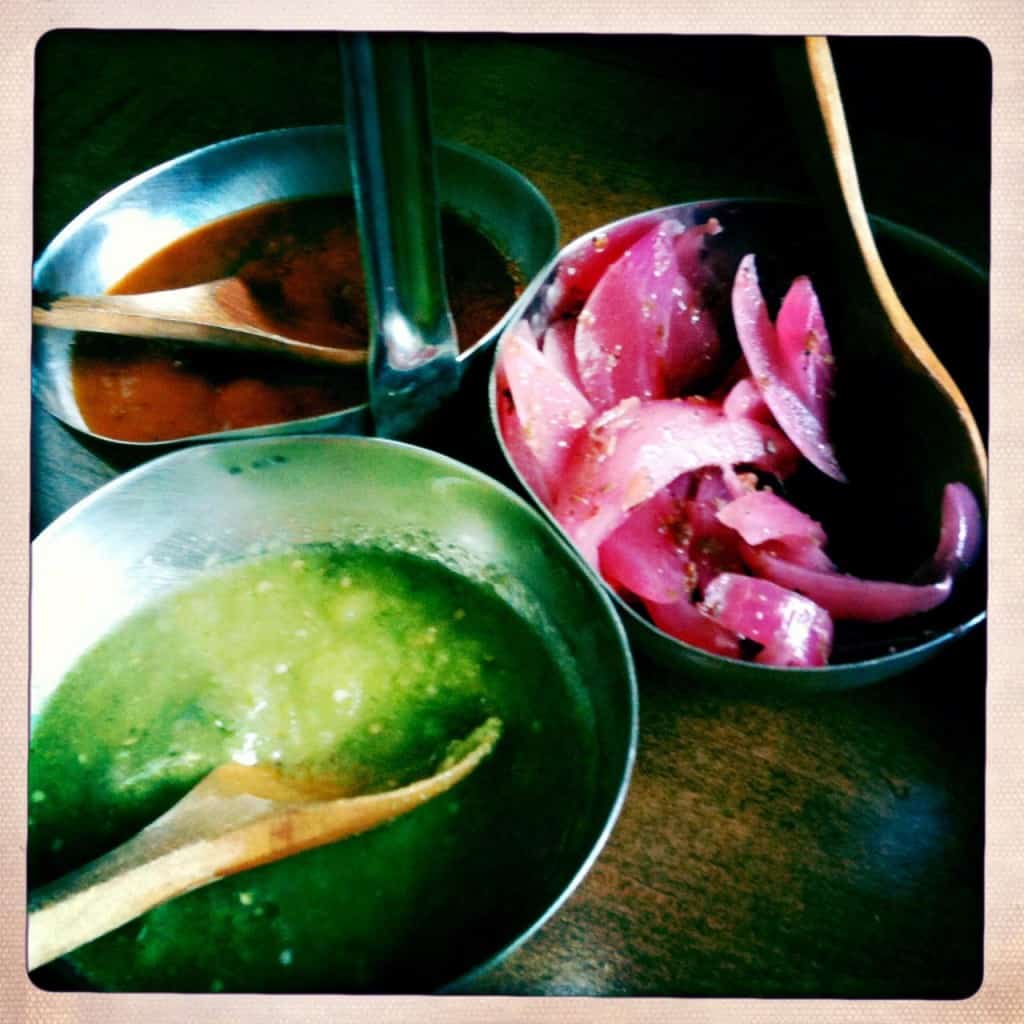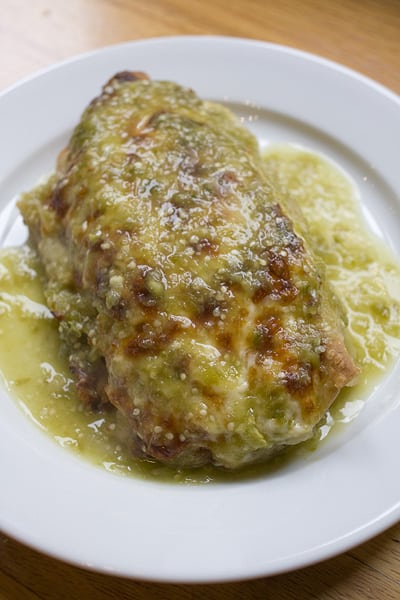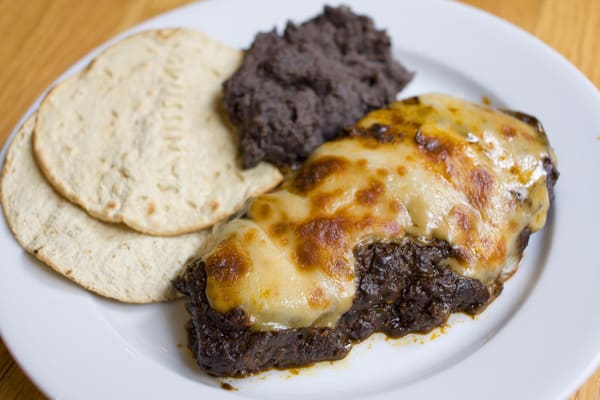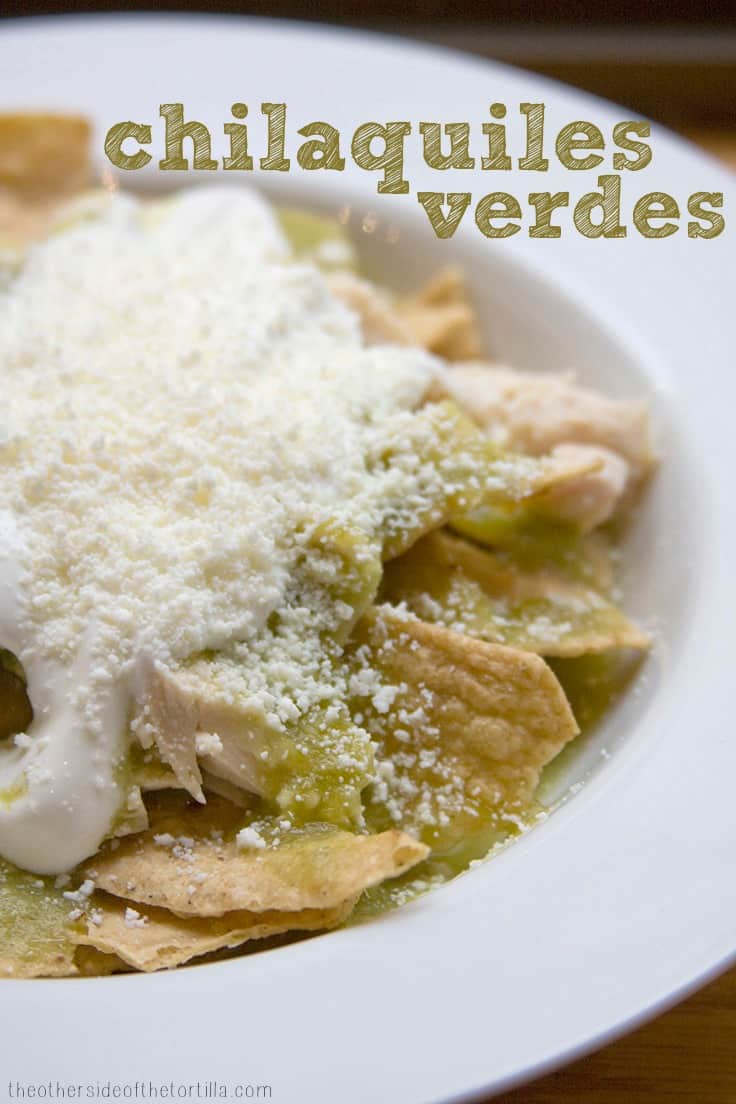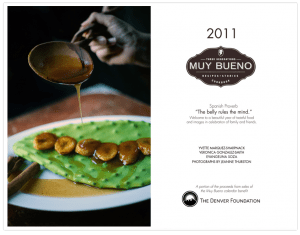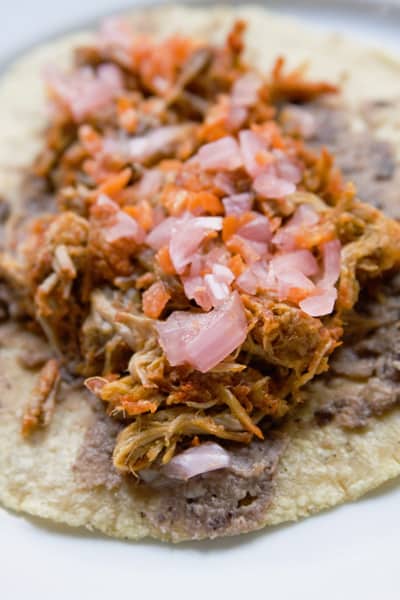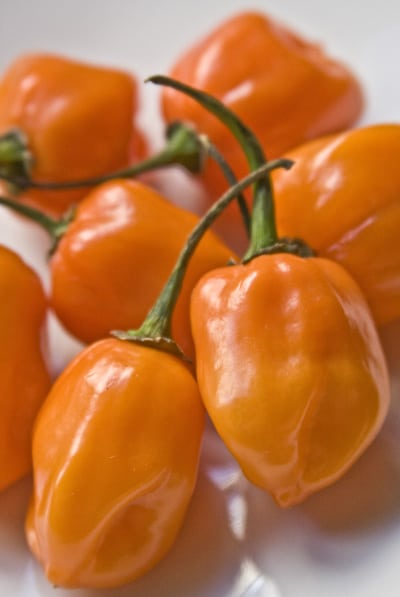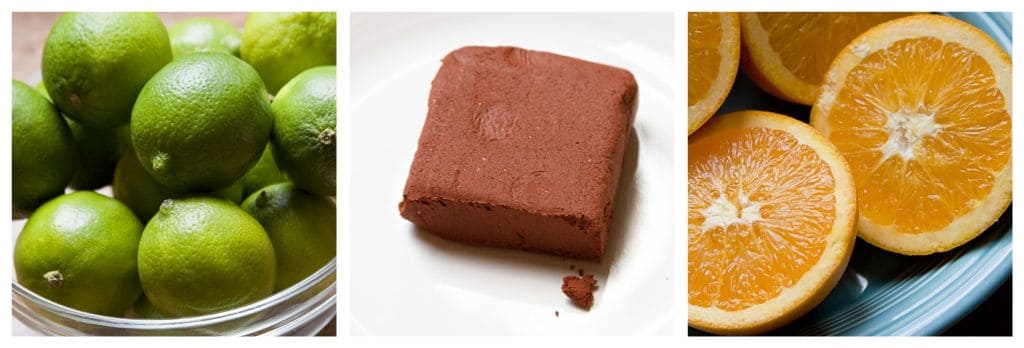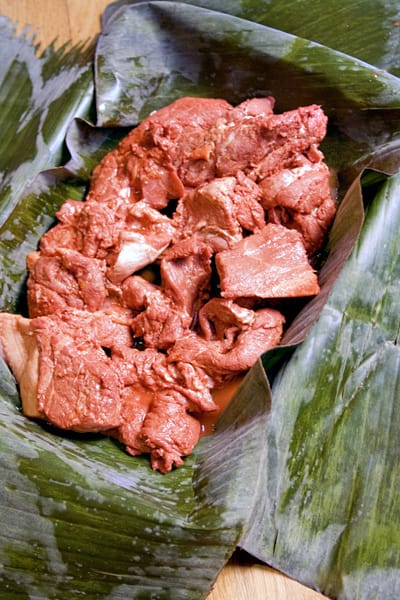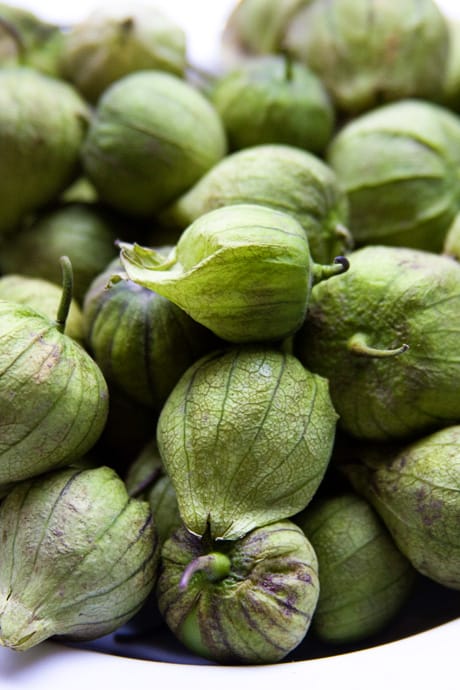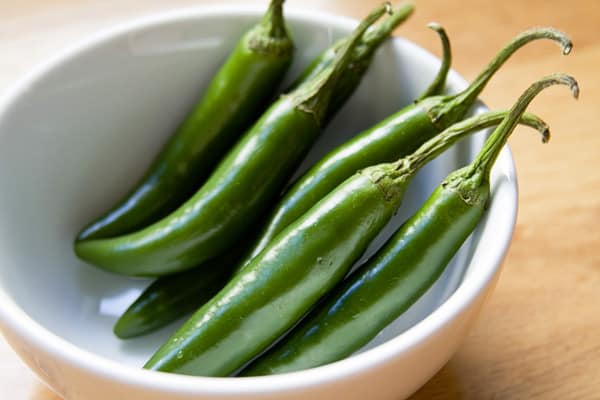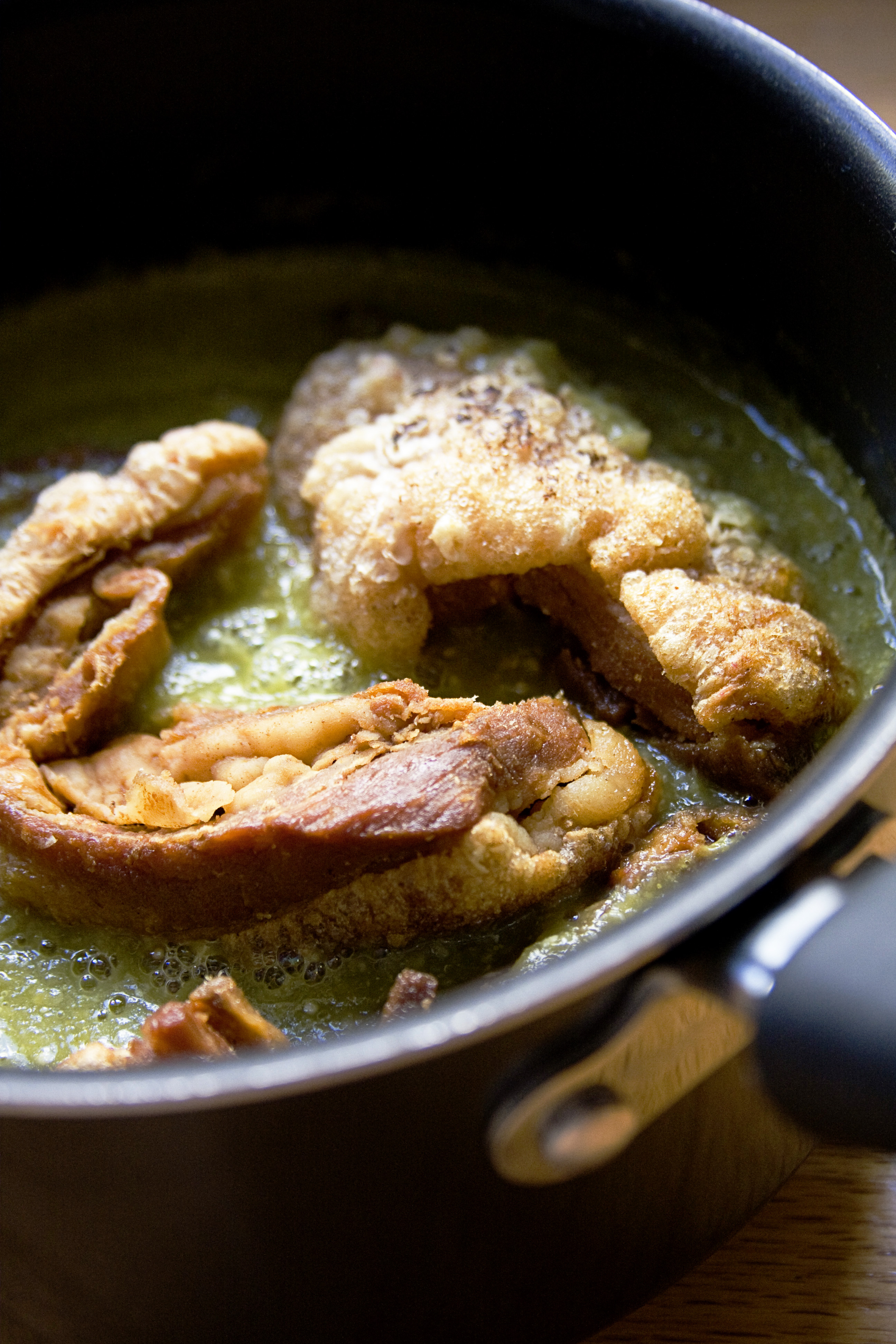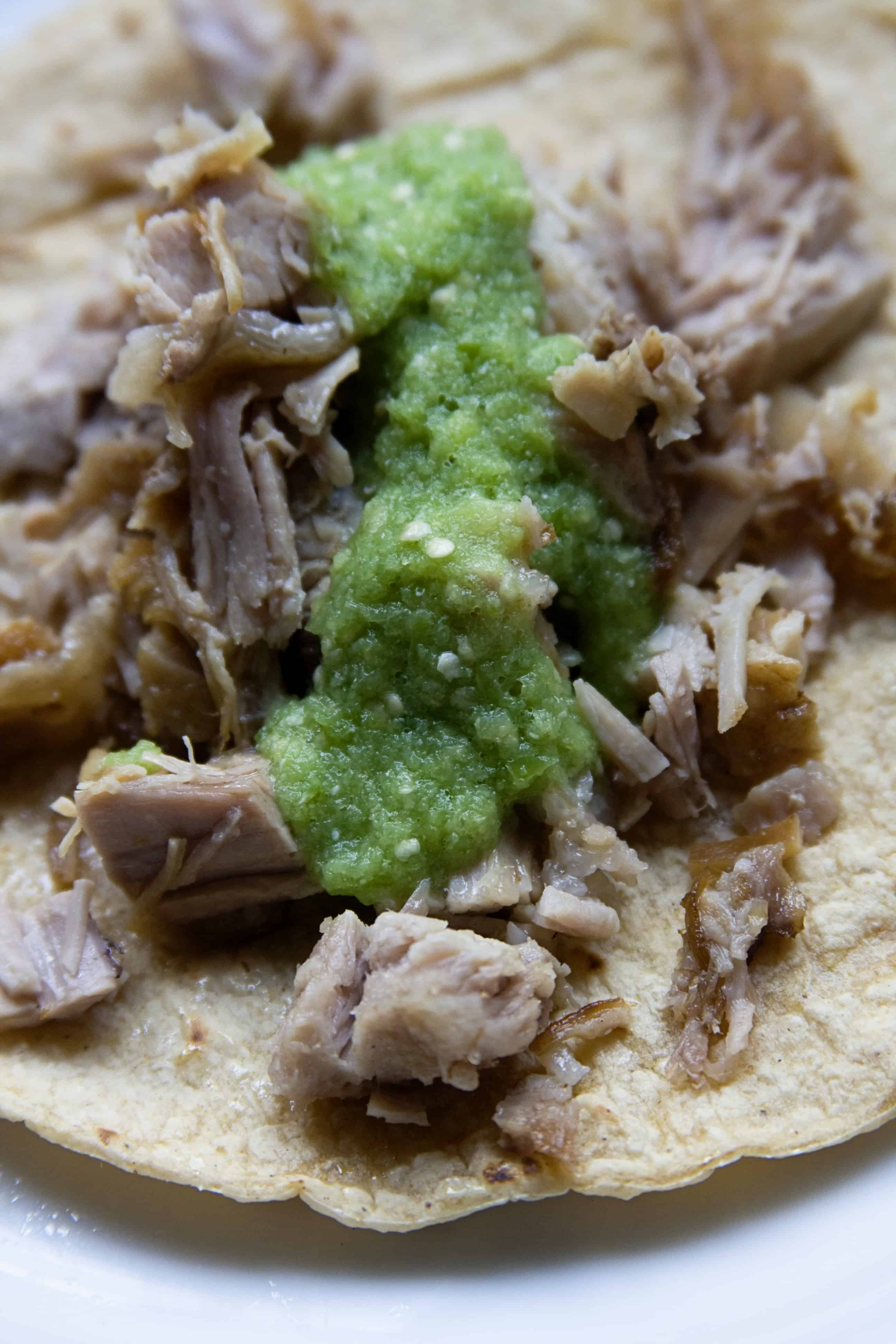This easy roasted, smoky salsa made with tomatillos and chile morita is great on everything from tacos to scrambled eggs.
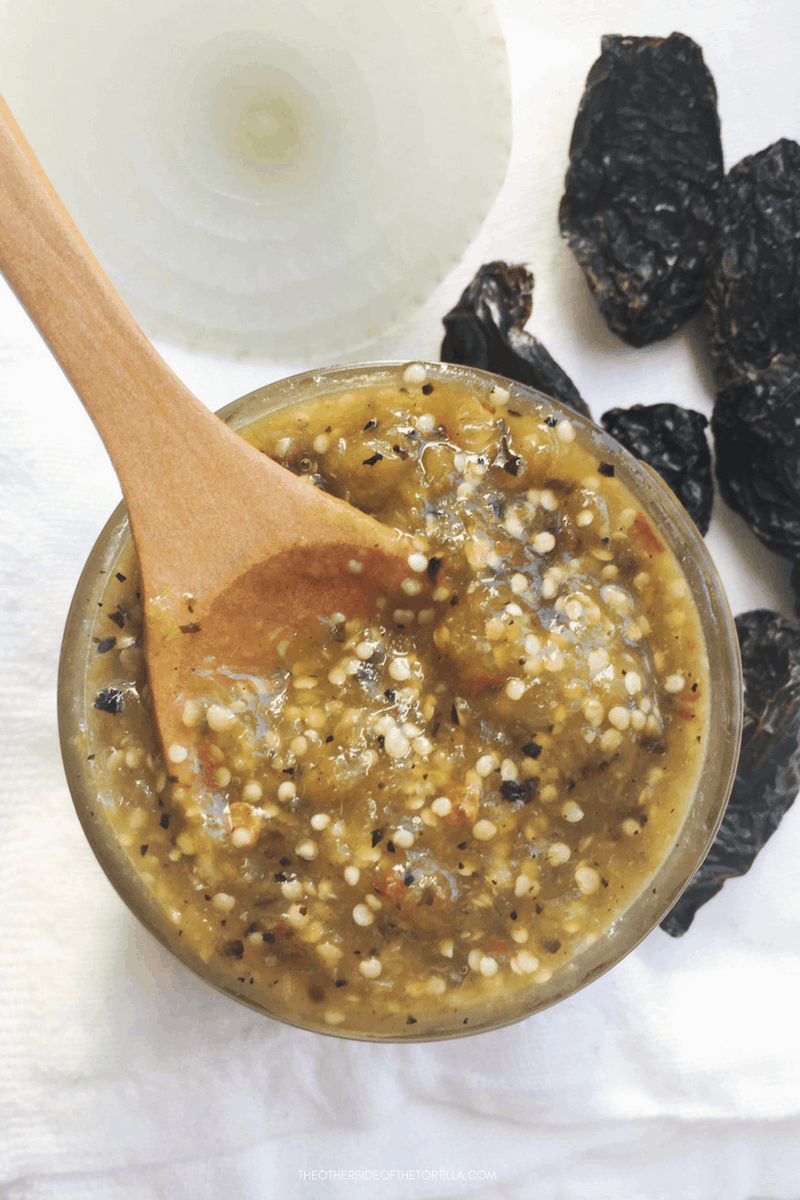
I’m all for simple salsas to dress up any meal of the day. Our dear friend Victor taught me how to make a version of this salsa when I was a newlywed and it’s one that I’ve continued making frequently ever since. You should use tomatillos milperos for this recipe. They’re a smaller variety of tomatillo, no bigger than about 1 to 1.5 inches in diameter. Anything much bigger than that is a larger variety of tomatillo. Tomatillos milperos have a more concentrated flavor, but are less acidic than the larger tomatillos, and have a slightly sweet, mellow taste when roasted. They’re called “milpero” because they’re often grown in the milpas in Mexico—the rows between corn planted in the cornfields.
…
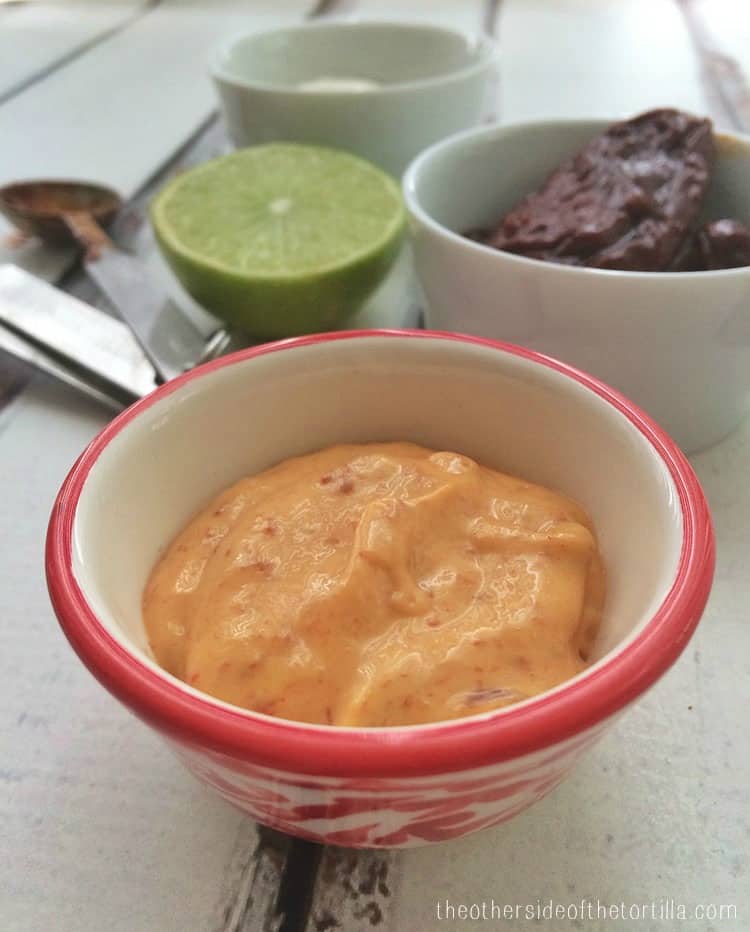
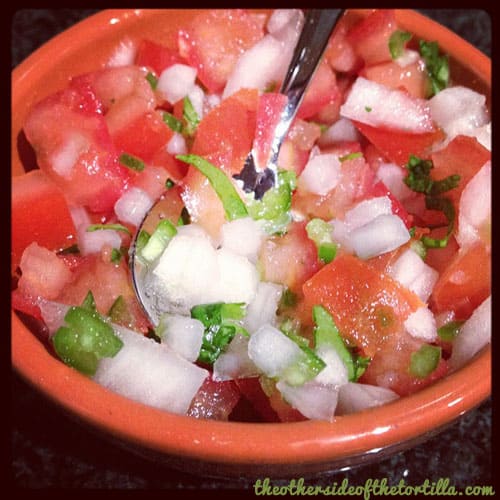 …
…
